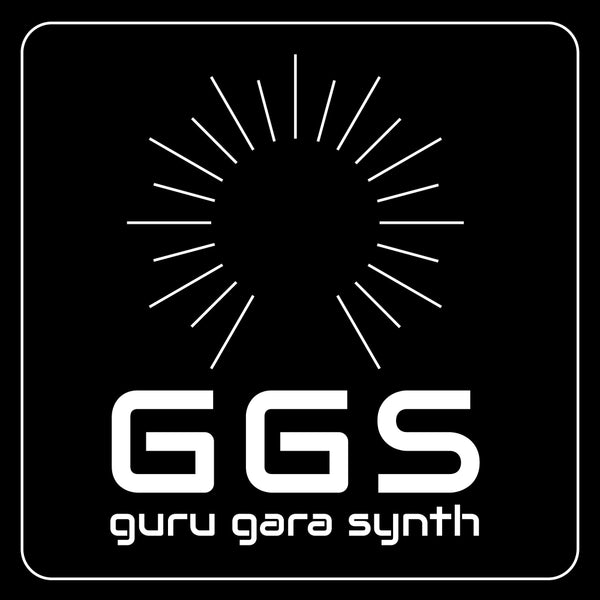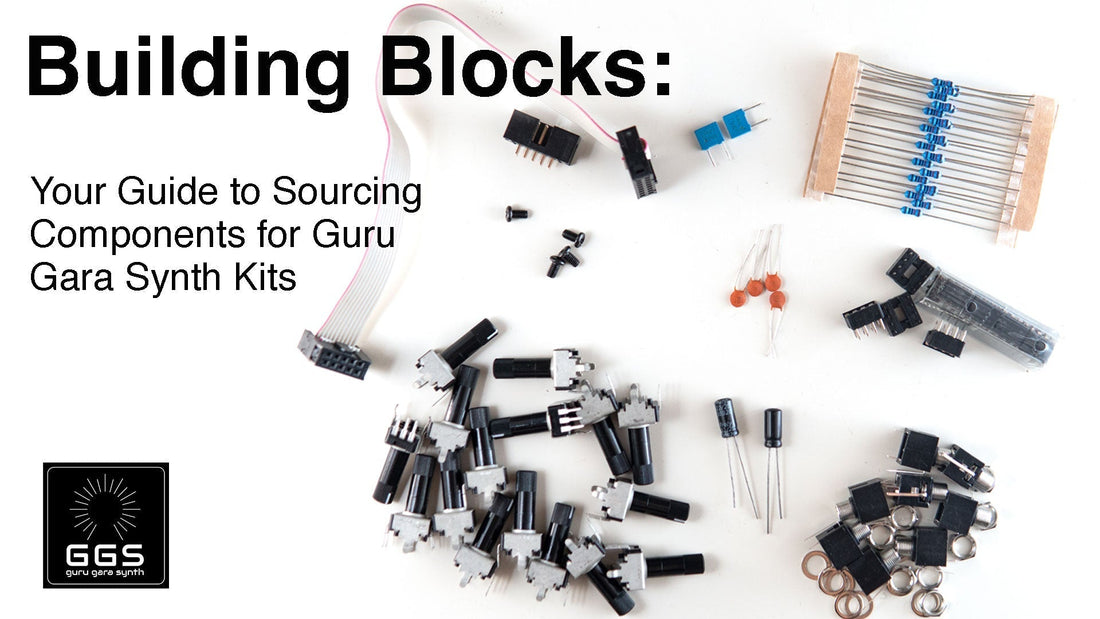Hey synth builders!
So, you've snagged one of our awesome PCB and front panel kits from Guru Gara Synth. (thanks, by the way! 😉). You're probably itching to get those soldering irons hot and bring your new module to life. But before you can bask in the glorious sounds, there's a crucial step: sourcing the electronic components.
Don't worry, it might seem daunting at first, but with a little guidance, you'll be navigating the world of resistors, capacitors, and ICs like a pro. This post will break down where and how to find the bits and pieces you need to complete your Guru Gara Synth project.
Understanding Your Bill of Materials (BOM)
The first and most important step is to locate the Bill of Materials (BOM) for the specific kit you purchased. This document is your shopping list! It will typically include:
- Reference Designators: (e.g., R1, C5, U2) These help you identify where each component goes on the PCB.
- Value: (e.g., 10kΩ, 100nF, 4.7µF) This specifies the electrical characteristic of the component.
- Tolerance: (e.g., 1%, 5%) This indicates the acceptable deviation from the stated value. For most synth circuits, 5% tolerance is usually fine for resistors and capacitors, but sometimes lower tolerances are specified for critical components.
- Package Type: This tells you the physical form factor of the component and how it will be soldered to the PCB. Pay close attention to this!
- Description: (e.g., Resistor, Ceramic Capacitor, Operational Amplifier) A general description of the component.
- Manufacturer Part Number (MPN): This is the most specific identifier and will help you find the exact component you need from suppliers.
- Footprint: (Sometimes included) This refers to the physical layout on the PCB where the component will be placed.
It's worth noting that for non-critical components in some GGS PCB Kits, certain details like the Manufacturer Part Number (MPN), detailed description, or specific package type might be omitted from the BOM. In these instances, the reference designator and value are usually sufficient for sourcing a suitable replacement.
Where to Find Your Components: Online Retailers
The internet is your best friend when it comes to sourcing electronic components. Here are some popular and reliable general online retailers:
- Mouser (www.mouser.com): A massive distributor with a huge selection, excellent search filters, and fast shipping (depending on your location). They often have good pricing for larger quantities.
- Digi-Key (www.digikey.com): Another major player with a vast inventory and similar advantages to Mouser. Their website also offers extensive datasheets and technical information.
- Tayda Electronics (www.taydaelectronics.com): Popular among DIYers for their lower prices, especially on common components. They have a good selection for Eurorack projects. Shipping times can vary depending on your location.
- RS Components (www.rs-online.com): A global distributor with a strong presence in Europe.
Specialty Retailers for Music and Synth Components:
For components specifically geared towards music and synthesizer projects, you might find what you need at these specialized online stores:
- Thonk (www.thonk.co.uk): A great source specifically for Eurorack and synthesizer DIY components, panels, and tools.
- Banzaimusic (www.banzaimusic.com): Another excellent European shop with a wide selection of parts tailored for music electronics projects.
- Musikding (www.musikding.de): A German retailer offering a diverse range of components and kits for musical effects and synthesizers.
- UK-Electronic (www.uk-electronic.de): A reliable source based in Germany with a broad selection of electronic components.
And don't forget to check out our own Guru Gara Synth shop, where we offer a selection of essential components for your synth builds, including potentiometers, ribbon cables, knobs, and more!
Tips for Ordering Components:
- Order Everything Together (If Possible): To save on shipping costs, try to order all the components for a single project (or even multiple projects) from the same supplier.
- Check Minimum Order Quantities (MOQ): Some suppliers might have MOQs for certain parts. Be mindful of this, especially if you only need a few of a specific component. Sometimes it's worth buying a few extra for future projects or in case of mistakes.
- Pay Attention to Package Types: Double-check that the package type listed in the BOM matches what you are ordering (e.g., through-hole vs. surface mount). Incorrect package types won't fit on the PCB.
- Consider Lead Time: Some components might have longer lead times (the time it takes for the supplier to get the part in stock). If you need a part urgently, check the availability before ordering.
- Read Datasheets: If you're unsure about a component, download and read its datasheet. This will provide detailed electrical and physical specifications.
- Double-Check Your Order: Before finalizing your order, carefully review everything to ensure you haven't made any mistakes in quantity, value, or package type.
Alternative Sourcing Options:
While online retailers are the most common source, here are a few other possibilities:
- Local Electronics Stores: If you have a local electronics component store, they can be a great option for common parts and can sometimes offer helpful advice. However, their selection might be more limited.
- Surplus Stores: Don't forget to explore surplus electronics stores like DSM CZ for potentially unique and cost-effective finds. Keep in mind that stock can be unpredictable.
- Scrapping Old Electronics: In some cases, you might be able to salvage components from old or broken electronics. However, this requires caution and knowledge of component identification.
Building Your Synth Journey with Guru Gara Synth
Sourcing components is a vital part of the DIY synth building process. By understanding your BOM and knowing where to look, you'll be well on your way to populating your Guru Gara Synth PCBs and creating unique sounds.
We're excited to see what you build! Don't forget to share your progress and finished modules with us on social media using #GuruGaraSynth #EurorackDIY.
Happy building!
Atesh K. / Guru Gara Synth

